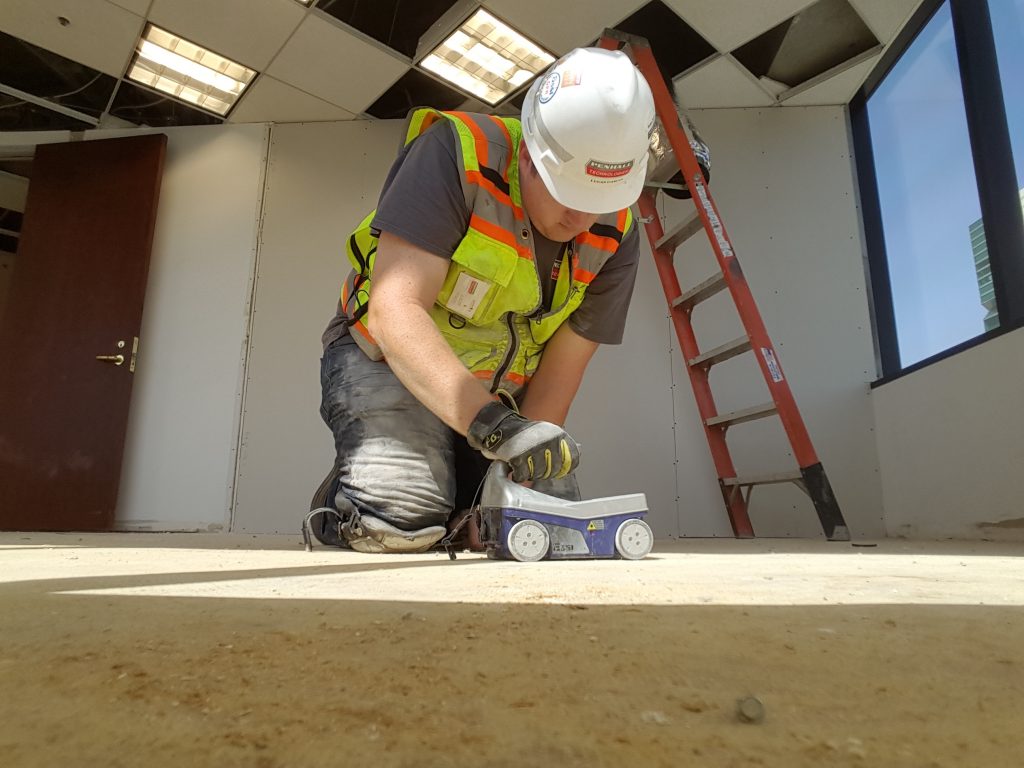Unveil the Transformative Power of Concrete Scanning in Making The Most Of Effectiveness and Security
Concrete scanning has actually emerged as a crucial tool in the building and construction industry, supplying exceptional advantages in improving job effectiveness and ensuring safety criteria. The transformative power of concrete scanning lies in its ability to supply real-time data and comprehensive insights, revolutionizing just how projects are prepared and performed.
Importance of Concrete Scanning
Ensuring the architectural honesty and safety of building jobs starts with the vital action of carrying out detailed concrete scanning. Concrete scanning is a non-destructive method utilized to discover and map subsurface elements within concrete structures.
In addition, concrete scanning helps in enhancing job timelines and budget plan by preventing unexpected costs and hold-ups that may occur due to unanticipated blockages within the concrete. Inevitably, investing in extensive concrete scanning is a positive technique that boosts both effectiveness and safety and security in building and construction jobs.
Just How Concrete Scanning Works
Concrete scanning runs as a vital tool in building projects by utilizing innovative technologies to detect and map subsurface components without creating structural damage. Ground Penetrating Radar (GPR) and Electromagnetic Induction (EMI) are 2 primary techniques made use of in concrete scanning. GPR jobs by sending out high-frequency radar pulses into the surface area, which recuperate when they experience subsurface objects or gaps. The time considered the signal to return indicates the deepness and area of the items. EMI, on the various other hand, utilizes magnetic fields to recognize variances in material make-ups, such as determining rebar or channels within concrete frameworks.
Throughout the scanning procedure, the information collected is examined in real-time, permitting prompt identification of possible threats or obstacles below the surface area. This information aids in decision-making, guaranteeing that building and construction activities proceed securely and effectively. In addition, 3D imaging software program can be utilized to produce topographic maps of the subsurface components, further improving project preparation and implementation. By using these advanced technologies, concrete scanning substantially lowers the threat of pricey problems and injuries on construction sites.
Benefits of Concrete Scanning
One of the main advantages of concrete scanning is the capacity to identify and find embedded items such as rebar, post-tension wires, and conduits properly. Concrete scanning aids in planning and creating extra efficiently, as it provides accurate info regarding the area and depth of structural components.

Case Studies: Concrete Scanning Success

In one more situation, a building and construction firm utilized 3D concrete scanning to evaluate the problem of aging concrete frameworks in a historical structure. The detailed scans provided useful understandings right into the level of wear and tear and aided prioritize maintenance efforts successfully. By proactively resolving areas of issue determined through scanning, the business was able to extend the life-span of the framework and make certain owner safety and security.
These study emphasize the transformative power of concrete scanning in boosting performance, precision, and safety in building and construction jobs.
Applying Concrete Scanning in Projects
Carrying out sophisticated scanning innovations throughout building and construction tasks has ended up being progressively vital for improving precision and safety and security. By incorporating concrete scanning into project preparation and implementation, building teams can determine potential dangers, such as rebar or post-tension cable televisions, hidden within concrete frameworks. This proactive technique reduces the risk of mishaps, delays, and expensive rework, eventually resulting in more reliable project timelines and budgets.
To implement concrete scanning successfully, project managers need to work together closely with experienced scanning specialists to identify one of the most suitable scanning methods for the specific job needs. Engaging scanning experts from the beginning of a job makes it possible for the team to develop detailed scanning strategies that address crucial areas of worry and guarantee extensive information collection.
Furthermore, integrating concrete scanning right into regular job operations can improve decision-making procedures, as real-time check information gives instant understandings right into the problem of concrete structures - Concrete Scanning. This data-driven approach promotes educated problem-solving and enables teams to make modifications without delay, fostering a culture of efficiency and security throughout the project lifecycle

Final Thought
Finally, concrete scanning plays an important role in improving efficiency and safety and security link in building jobs. By using innovative technology to spot and map out underlying structures within concrete, this procedure aids to avoid costly mistakes, make sure architectural stability, and decrease dangers on site. With the capacity to uncover concealed components and give precise information, concrete scanning verifies to be an important device for enhancing task outcomes and taking full advantage of total success.
Concrete scanning is a non-destructive method utilized to spot and map subsurface elements within concrete structures. Furthermore, concrete scanning aids in enhancing job timelines and budget plan by staying clear of unforeseen costs and delays that might develop due to unpredicted obstructions within the concrete. One significant case study involves a massive you could check here improvement task where concrete scanning played a vital duty in making certain project success.In an additional case, a construction company used 3D concrete scanning to analyze the problem of aging concrete structures in a historic building. By integrating concrete scanning into job planning and implementation, construction teams can recognize prospective risks, such as rebar or post-tension cables, hidden within concrete structures.